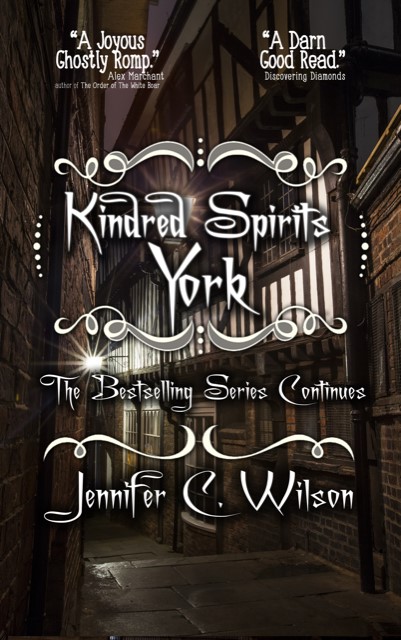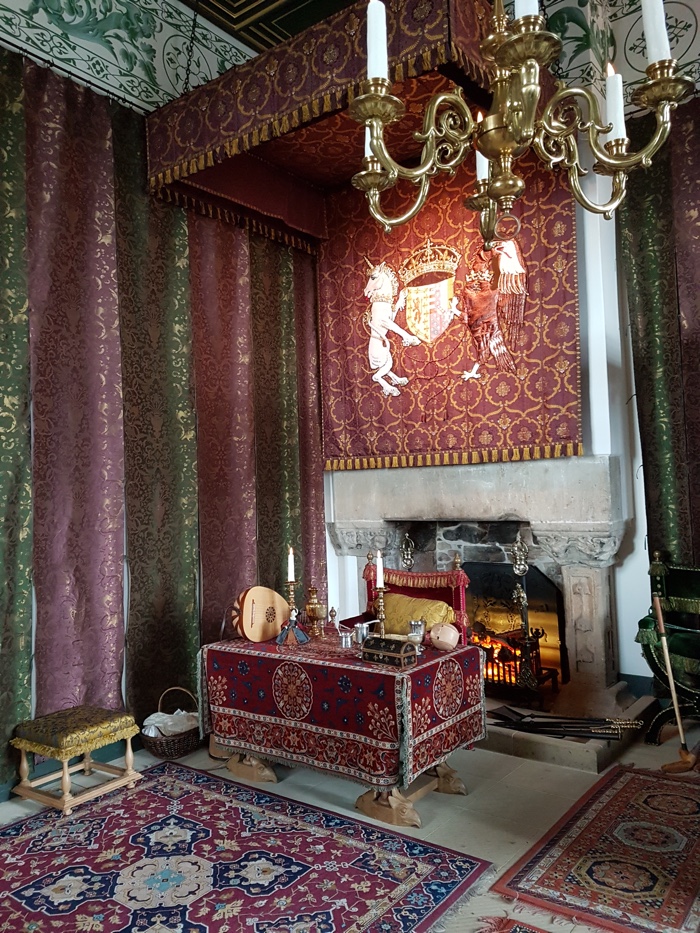This week’s guest is Jennifer C. Wilson, a marine biologist by training, who has developed an equal passion for history and historical fiction whilst stalking Mary, Queen of Scots on childhood holidays. (She has since moved on to Richard III.) Enrolling on an adult education workshop on her return to the north-east of England for work reignited her pastime of creative writing, and she has been filling notebooks ever since.
In 2014, Jennifer won the Story Tyne short story competition, and has been working on a number of projects since, including co-hosting the North Tyneside Writers’ Circle. Her Kindred Spirits novels are published by Crooked Cat Books and her timeslip novella, The Last Plantagenet?, by Ocelot Press.
She lives in North Tyneside, and is very proud of her approximately 2-inch view of the North Sea.
Over to Jennifer!
Have you ever been in the middle of a story, either reading or watching, when you’re suddenly jolted from your enjoyment, and find yourself thinking: “But you cannot get from there to there that way” or “That’s ridiculous, they’re miles from each other.”
We’ve all been there, usually when watching or reading about somewhere we know really well, either through living there or visiting, and although you might think it doesn’t matter to anyone other than those who know a particular place intimately, do you really want to shake your readers’ belief of your world?
Nobody is expecting you to necessarily be the academic expert in your particular field, but key facts still need to be correct, and one of the biggest areas for this is your setting. Even if you’re writing contemporary fiction, set in a ‘real’ location, e.g. the heart of London, world-building is vital to help readers lose themselves in your story, and this is doubled or tripled if you’re writing about far-flung places, either spatially or temporally.
In historical fiction, some of the ‘big hitters’ to get right include:
- Travel methods and timings;
- Location logistics; and
- Technology / food.
For this post, I’m thinking particularly about location logistics. This ranges from small-scale issues such as which parts of a building were physically present at the time you’re writing, to larger issues such as towns and their connection with the wider world.
Staying at a smaller scale, it’s important to think about what a place was really like in the period you’re writing about. One of the best ways to get a feel for a place is of course to visit it, but with historical fiction, we can never truly see a location in the way our characters would have done.
One example of this I struggle with is churches. We’re so used to seeing our churches fairly plain, simple, white, with very little adornment, and yet, you only have to look at contemporary churches on the Continent to see how British churches may have looked prior to the Reformation. Likewise, when we visit castles, even if we stand in the very room in which our action took place, we must really stretch our imaginations to see, for example, the roaring fire in the hearth, the thick tapestries on the walls, or to breathe in the heavy smoke, squint in the candlelight.
However, visiting your locations is still the best way to get a feel for that other element of setting: logistics. When I visited the Tower of London a second time, knowing by then that I wanted to write a story set there, I looked at it from a different angle, thinking about distances between buildings, what direction you would turn when leaving through a specific door etc. Yes, internal décor may have changed, but you still cannot have characters turning out of a door and into a brick wall (although, with mine being ghosts, I did have some leeway there!).
But what if visiting your location is out of the question? If it’s been destroyed over time, obliterated by modern developments? Getting to somewhere similar can be a useful stand-in. So many places recreate their original settings these days.
Last year, I visited Stirling Castle, where Historic Scotland had recently redone the royal suite to represent the time of Mary, Queen of Scots’ parents, James V and Marie de Guise. The rooms are beautifully done, with tapestries, furnishings and accessories made in line with what’s known from inventories and descriptions. You can get a real sense of how it would have been to walk into them.
The next day, I went to Linlithgow, which was used by James and Marie during the same period, but hasn’t been kept up to the same standards of Stirling.
However, thanks to the work done at Stirling, the grey-walled, roofless rooms at Linlithgow could come to life in the same way. Likewise, and more extreme, we can look around Hampton Court Palace to get a sense of how the now-lost Nonsuch Palace might have been appointed, both having been used by the same monarch, Henry VIII.
This, combined with maps, descriptions and paintings can work to give a solid idea what your setting would have been like during the time you’re writing about. Reading extracts of diaries, letters and notes can also give great insight.
The physical setting is only half of the picture though. When we visit ruined castles, or battlefields, we dress ‘appropriately’ for the way things are now. Trainers and jeans are perfect attire for clambering up and down spiral staircases, or wandering on semi-muddied paths to see where a particular regiment might have been for a main advance. But, consider doing the same wearing the ‘right’ clothes.
I’m personally not into my battlefields, but I have found my mind wandering when I’m strolling through a great hall, thinking how wonderful it would have been to saunter through the same space in a stunning gown, the candlelight picking out the gemstones along the neckline, and golden thread glistening. But then you have to leave the hall, and navigate the narrow passageway to your bedchamber, or descend the tightly-wound staircase to leave the building. Not quite as glamorous, and also makes you pause when you have your heroine rushing anywhere!
I read a post on social media just this week, saying how certain actions make us feel like historical heroines, such as picking up the hem of a long dress when walking up steps. I had this in Malaga a fortnight ago, wandering through the palace within the Alcazaba, having to lift my hem to climb a set of stairs into the palace. Immediately I was transported back in time!
We cannot all have the opportunity to physically try on period dress, but seeing others wearing it can go a long way to understanding how people would have actually made their way about your setting.
At least, with almost all of these research techniques, it involves a nice day getting out and about, always good for adding inspiration into the ‘pot’!
Connect with Jennifer:
Website: https://jennifercwilsonwriter.wordpress.com/
Amazon: https://www.amazon.co.uk/Jennifer-Wilson/e/B018UBP1ZO/
Facebook: https://www.facebook.com/jennifercwilsonwriter/
Twitter: https://twitter.com/inkjunkie1984
Instagram: https://www.instagram.com/jennifercwilsonwriter/
Read Jennifer’s latest – kindred Spirits: York

In the ancient city of York, something sinister is stirring…
What do a highwayman, an infamous traitor, and two hardened soldiers have in common? Centuries of friendship, a duty to the town, and a sense of mischief – until they realise that someone is trying to bring chaos to their home.
Joining forces with local Vikings, the four friends keep an eye on the situation, but then, disaster strikes.
Can peace be restored both inside and out of the city walls?
Alison Morton is the author of Roma Nova thrillers – INCEPTIO, PERFIDITAS, SUCCESSIO, AURELIA, INSURRECTIO and RETALIO. CARINA, a novella, and ROMA NOVA EXTRA, a collection of short stories, are now available. Audiobooks are available for four of the series. NEXUS, an Aurelia Mitela novella, will be out on 12 September 2019.
Find out more about Roma Nova, its origins, stories and heroines… Download ‘Welcome to Roma Nova’, a FREE eBook, as a thank you gift when you sign up to Alison’s monthly email newsletter. You’ll also be first to know about Roma Nova news and book progress before everybody else, and take part in giveaways.
















While researching my latest novel, I traveled to a number of Civil War battle sites. Among the notable is the Vicksburg National Military Park located in Vicksburg, MS. We arrived in late June to find identical hot and humid weather conditions as those during June of 1863 when the battle and siege of Vicksburg took place. There is a perimeter road through the park and numbered sign posts that correspond to audio from a CD which can be purchased at the gift shop upon entering the park. Battle lines are demarcated and cannons placed as they were during the battle.
While at the Military Park, as a former combat soldier, I experienced anxiety and trepidation when I stood where Union troops gathered before their futile attack at Thayer’s Approach. As I hiked the battlefield, the sun beating down and sweat drenching my clothing…the soldiers on that day wearing wool uniforms must have kept their bodies approaching heat exhaustion.
My imagination filled my mind with the screams of the wounded and dying, the sound of their guns firing, the buzzing sound of rounds from the Confederate lines at the top of the hill and cannon shells exploding in our midst. Even the smell of gunpowder seemed to assault my nose. From the heights of Vicksburg, one can view where waterborne cannon lobbed shells from the Mississippi into the town during the siege, causing the population to resort to living in caves.Hopefully, readers will find my writing reflects what I felt that day plus what Civil War soldiers and medical personnel endured during that terrible war.
Hi Richard, I’m sure it will capture it very well – and the luck of experiencing the same conditions will have helped even further with that.